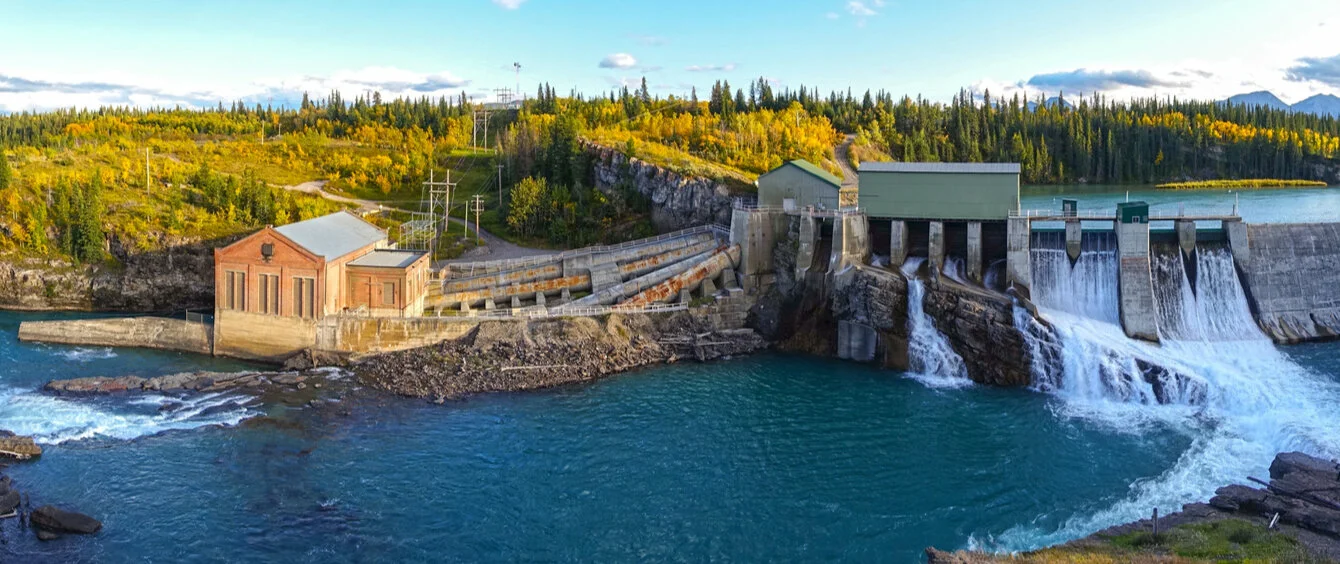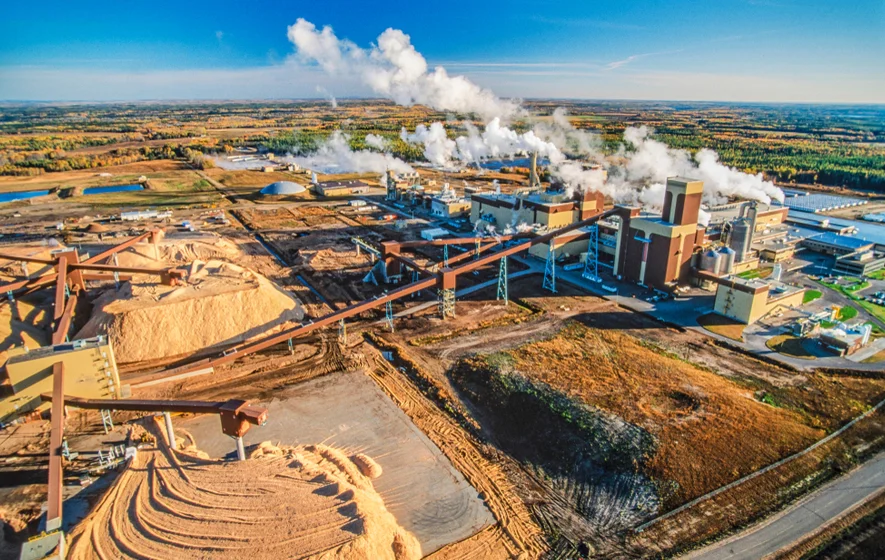Immense forests envelop 70 percent of the country’s surface. To the west, the snow-capped peaks of the Rocky Mountains rear thousands of metres into the air, whilst to the north, the mainland gives way to the Arctic Ocean. Canada is known for its diverse landscapes, untouched wilderness – and for its seemingly inexhaustible natural resources. The 38 million inhabitants of the second-largest country in the world have access to boundless natural resources. With a six percent share of global oil production, the Commonwealth country is the fourth largest oil producer in the world. Yet renewable energy is becoming ever more important. en:former has taken a closer look at the transition of this energy system.
The energy industry holds great sway over the Canadian economy. It is responsible for around ten percent of the nation’s GDP, and directly or indirectly accounts for more than 800,000 jobs. Since the turn of the millennium, the oil industry, in particular, has been booming. The western province of Alberta is home to the second-largest deposit of oil in the world, made up of so-called oil sands – a natural mixture containing oil and sand.
However, the extraction process for these deposits is much more complex and energy-intensive compared to that of conventional oil. To access the oil sands, extraction companies have to excavate layers of sand buried under the forest floor. If this layer is too deep, then shafts also need to be dug into the ground. When water is injected into these shafts at high pressure, the coveted substance is separated from the sand and can then be pumped to the surface. Oil production has been booming in recent years. In fact, thanks to modern techniques, Canadian oil production has more than doubled.
The oil is mainly headed for export, with less than one in every five barrels consumed domestically. In 2019, for example, the US met almost a quarter of its oil needs with imports from Canada. The downside: the production process releases considerable amounts of CO2. As a result of rising production, greenhouse gas emissions in the sector more than tripled between 2000 and 2018.
In addition to oil, the country has access to large natural gas reserves and, here too, almost half of the produced gas is then exported. Canada is also the second-largest producer of uranium, only piqued to the post by Kazakhstan, which it uses to generate electricity in nuclear power plants.
Hydropower comes up trumps
While the economy overall is still heavily reliant on fossil fuels, the electricity industry, on the other hand, is much greener and more sustainable. For years, hydropower has easily shouldered the brunt of the electricity mix, with almost 60 percent of electricity generated in 2019 coming from hydropower plants. In fact, 563 of these plants with a total capacity of more than 81 gigawatts (GW) have already been installed along the numerous rivers that criss-cross the country – and this trend is only picking up steam.
With a share of nine percent of global hydropower generation, Canada is therefore the third-largest producer of hydropower. The country’s most powerful power plant is located in the province of Québec. Named after former Prime Minister Robert Bourassa, the plant has been in operation since the early 1980s and has an installed capacity of 5616 megawatts (MW).
Virtual reality visit of the Robert Bourassa plant in Québec
Nuclear power is one of the most important energy sources in the country, partly due to its natural uranium deposits. Currently, nuclear power plants generate around 15 percent of all electricity. According to plans set out by the Canadian government, this figure is only set to keep on growing moving forward. In 2018, the responsible ministry, Natural Resources Canada (NRCan), launched a programme to advance the development of a new generation of reactors. The most powerful plant is located in the south-eastern province of Ontario. ‘Bruce’ boasts eight units with a combined capacity of 6739 MW. Other fossil fuels play a much smaller role. Only seven percent of electricity currently comes from coal-fired power generation.
Other renewable energy sources, such as wind and solar, only play a minor part in the electricity mix. In 2019, the capacity of onshore wind turbines was 13.4 GW, whilst that of PV plants clocked in at three GW. They accounted for five and 0.6 percent of electricity generation in 2019, respectively.
Canadian electricity generation by source (2018)
Source: NRCan Energy Book 2020/2021The majority of electricity generation is zero emission
Although Canada’s appetite for electricity has grown in recent years, it also managed to reduce greenhouse gas emissions from electricity production by 50 percent between 2000 and 2018. Eighty-two percent of electricity now comes from low-emission sources (i.e. renewables and nuclear) – according to NRCan, this makes Canada the leader in the group of countries that produce the most electricity, with renewables contributing 16 percent more in 2018 than in 2010.
For several years now, the government has become ever more focussed on reducing greenhouse gas emissions in the energy sector. Not only has Canada joined the Paris Agreement, under Prime Minister Justin Trudeau, the ‘Mid-Century Strategy for a Clean Growth Economy’ was also adopted at the end of 2016. The paper outlines strategies for cutting CO2 emissions by 80 percent compared to the baseline year 2005, by 2050.
Small steps for wind and solar
Billions of euros will need to be invested in expanding renewable energy to make this happen. Although hydropower is to maintain its pole position, according to NRCan, between 2015 and 2019, the government also pledged its support to the expansion of wind power capacities and solar farms – to the tune of 5.6 billion and 2.5 billion dollars respectively. This earned the two sectors the joint title of fastest-growing energy sources in the country. Many of the turbines have been installed in Ontario. The province, which is also home to the metropolis Toronto, is particularly densely populated and energy is always in high demand.
However, these plans are modest compared to those of other states. The responsible regulatory authority, the National Energy Board, forecasts that wind power will account for 9.5 percent of the electricity mix by 2040. Solar plants will then account for a mere 1.2 percent. The main reason for this is the nation’s northern location – there are simply not enough hours of sunshine a day, particularly in winter.
Canada stays true to its principles
The prospective gradual phase-out of coal opens up further growth opportunities for the wind and solar sectors – and renewables are to plug these gaps. Yet, above all, Canada is looking to stay true to its hydropower and nuclear focus. On the flip side, however, Justin Trudeau’s government is also subsidising fossil fuels. So Alberta’s CO2-intensive oil production won’t be hanging up its hat any time soon.

